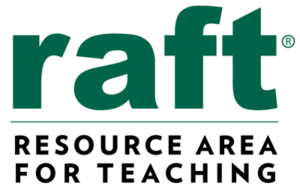Let it Rot
Students can observe how natural and man-made materials break down and decompose by experimenting with different materials and environmental variables.
Standards
Idea Sheets are cross-referenced to subjects listed in the Common Core, Next Generation Science Standards, and California Content Standards.
Science and Engineering Practices: 1. Asking Questions and Defining Problems 2. Developing and Using Models 3. Planning and Carrying Out Investigations 4. Analyzing and Interpreting Data 5. Using Mathematics and Computational Thinking 6. Constructing Explanations and Designing Solutions 7. Engaging in Argument from Evidence 8. Obtaining, Evaluating, and Communicating Information ||Next Generation Science Standards||Grade 3||Science and Engineering Practices|||Science and Engineering Practices: 1. Asking Questions and Defining Problems 2. Developing and Using Models 3. Planning and Carrying Out Investigations 4. Analyzing and Interpreting Data 5. Using Mathematics and Computational Thinking 6. Constructing Explanations and Designing Solutions 7. Engaging in Argument from Evidence 8. Obtaining, Evaluating, and Communicating Information ||Next Generation Science Standards||Grade 4||Science and Engineering Practices|||Develop a model to describe the movement of matter among plants, animals, decomposers, & the environment. [Emphasis: the idea that matter that is not food (air, water, decomposed materials in soil) is changed by plants into matter that is food.]||Next Generation Science Standards||Grade 5||Life Science||Ecosystems: Interactions, Energy, and Dynamics|||Science and Engineering Practices: 1. Asking Questions and Defining Problems 2. Developing and Using Models 3. Planning and Carrying Out Investigations 4. Analyzing and Interpreting Data 5. Using Mathematics and Computational Thinking 6. Constructing Explanations and Designing Solutions 7. Engaging in Argument from Evidence 8. Obtaining, Evaluating, and Communicating Information ||Next Generation Science Standards||Grade 5||Science and Engineering Practices|||Analyze and interpret data to provide evidence for the effects of resource availability on organisms and populations of organisms in an ecosystem. ||Next Generation Science Standards||Middle School||Life Science||Ecosystems: Interactions, Energy, and Dynamics|||Develop a model to describe the cycling of matter and flow of energy among living and nonliving parts of an ecosystem. ||Next Generation Science Standards||Middle School||Life Science||Ecosystems: Interactions, Energy, and Dynamics|||Science and Engineering Practices: 1. Asking Questions and Defining Problems 2. Developing and Using Models 3. Planning and Carrying Out Investigations 4. Analyzing and Interpreting Data 5. Using Mathematics and Computational Thinking 6. Constructing Explanations and Designing Solutions 7. Engaging in Argument from Evidence 8. Obtaining, Evaluating, and Communicating Information ||Next Generation Science Standards||Middle School||Science and Engineering Practices|||Science and Engineering Practices: 1. Asking Questions and Defining Problems 2. Developing and Using Models 3. Planning and Carrying Out Investigations 4. Analyzing and Interpreting Data 5. Using Mathematics and Computational Thinking 6. Constructing Explanations and Designing Solutions 7. Engaging in Argument from Evidence 8. Obtaining, Evaluating, and Communicating Information ||Next Generation Science Standards||High School||Science and Engineering Practices
5. Scientific progress is made by asking meaningful questions & conducting careful investigations. As a basis for understanding this concept, and to address the content of the other strands, students will develop questions and perform investigations.||CA Science||Grade 3||04. Investigation and Experimentation|||2.b. Producers and consumers (herbivores, carnivores, omnivores, and decomposers) are related in food chains and food webs, and may compete with each other for resources in an ecosystem.||CA Science||Grade 4||02. Life Sciences||2. All organisms need energy and matter to live and grow.|||2.c. Decomposers, including many fungi, insects, and microorganisms, recycle matter from dead plants and animals.||CA Science||Grade 4||02. Life Sciences||2. All organisms need energy and matter to live and grow.|||3.d. Most microorganisms do not cause disease and many are beneficial.||CA Science||Grade 4||02. Life Sciences||3. Living organisms depend on one another and on their environment for survival.|||6. Scientific progress is made by asking meaningful questions & conducting careful investigations. As a basis for understanding this concept, and to address the content of the other strands, students will develop questions & perform investigations.||CA Science||Grade 4||04. Investigation and Experimentation|||6. Scientific progress is made by asking meaningful questions and conducting careful investigations. As a basis for understanding this concept and addressing the content in the other three strands, students should develop their own questions and perform investigations. Student will:||CA Science||Grade 5||04. Investigation and Experimentation|||7. Scientific progress is made by asking meaningful questions and conducting careful investigations. As a basis for understanding this concept and addressing the content in the other three strands, students should develop their own questions and perform investigations. Students will: ||CA Science||Grade 6||07. Investigation and Experimentation|||7. Scientific progress is made by asking meaningful questions & conducting careful investigations. As a basis for understanding this concept, and to address the content of the other strands, students will develop questions & perform investigations.||CA Science||Grade 7||07. Investigation and Experimentation|||9. Investigation and Experimentation||CA Science||Grade 8||01. Physical Sciences
- Life Science
- Grades 3-5
- Grades 6-8
- Science
